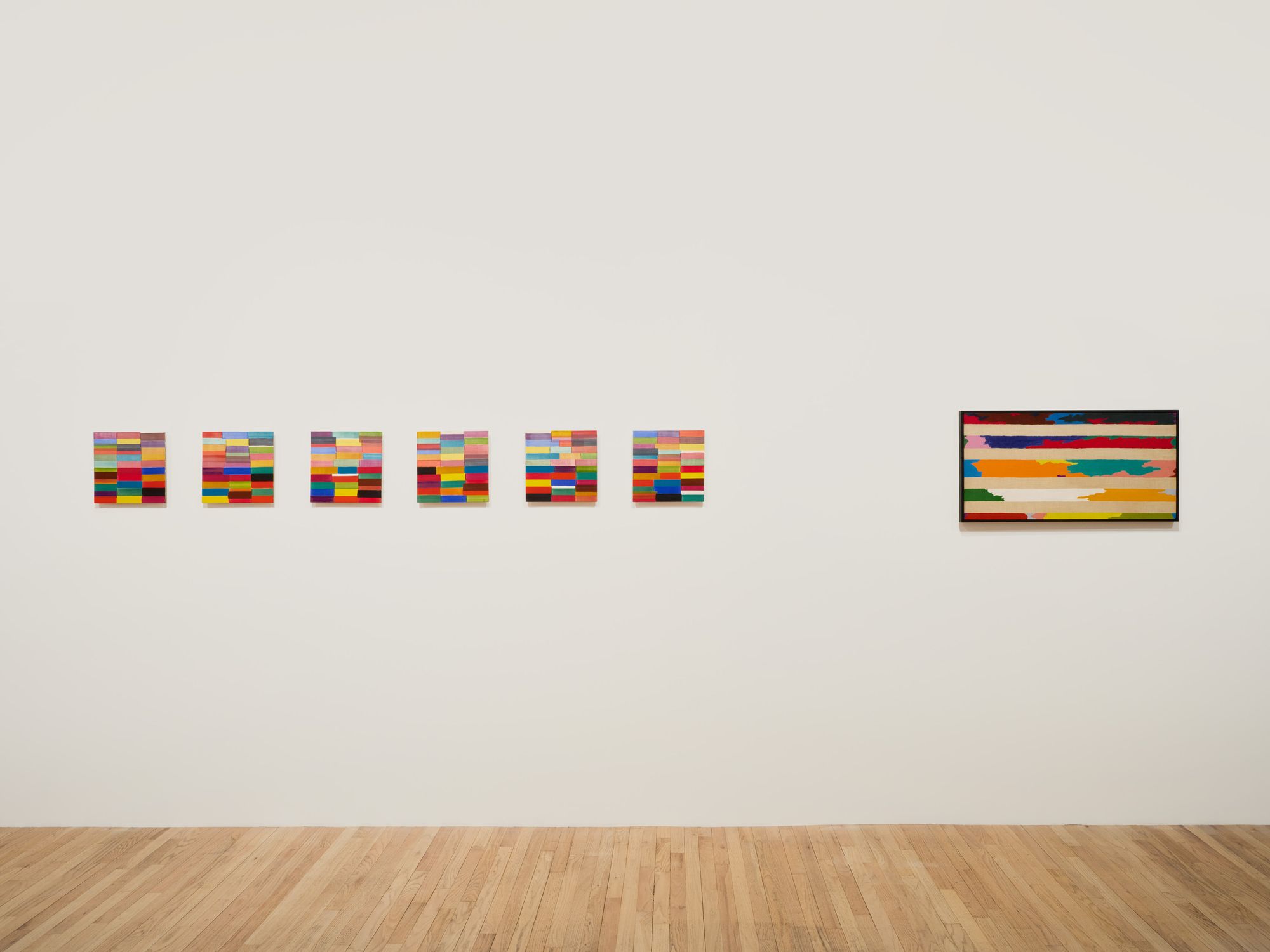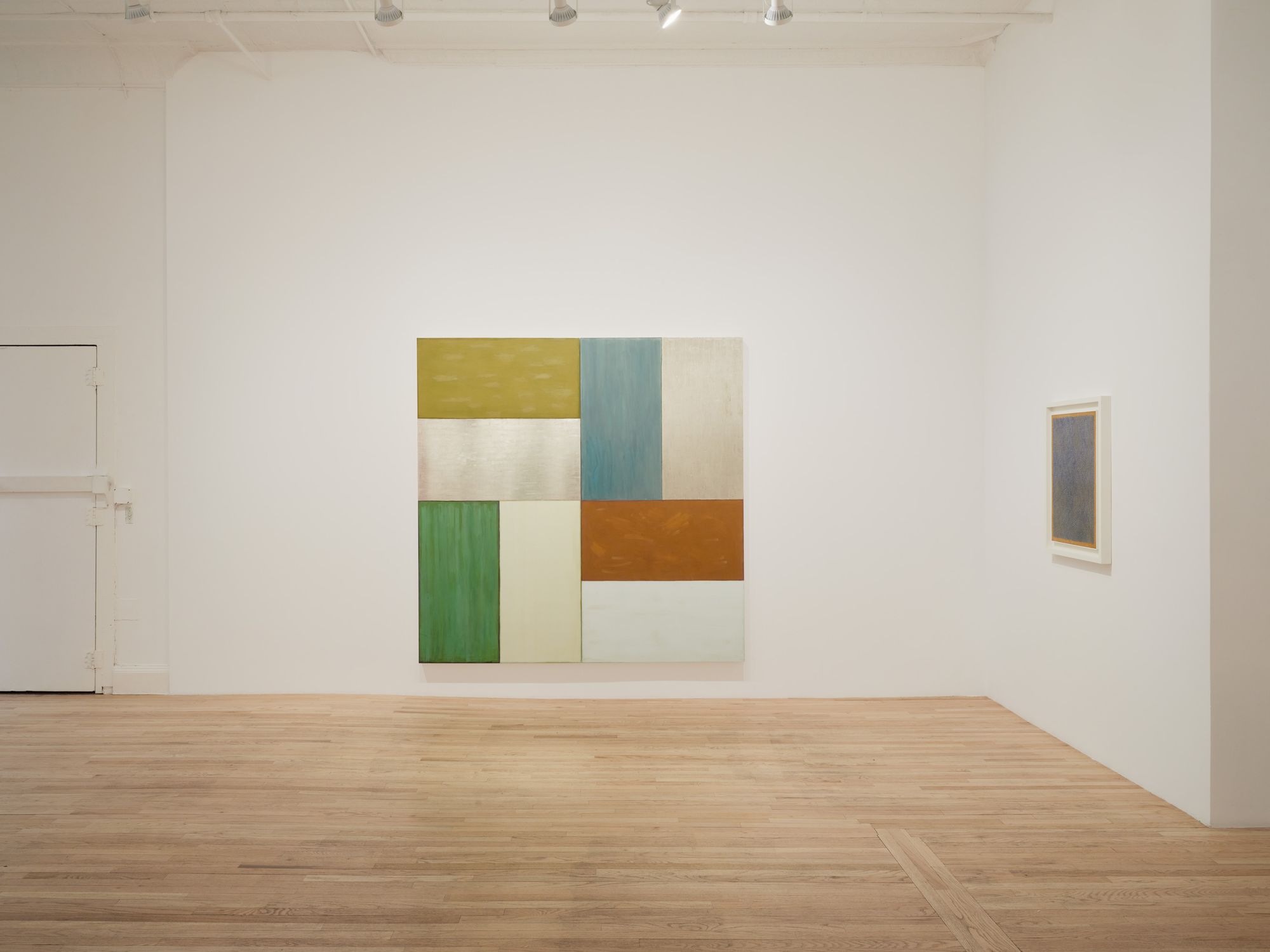
Bortolami is pleased to present an exhibition honoring the friendship and mentorship between the Italian painter Piero Dorazio and the American artist Mary Obering, presented together for the first time. Works from each artist’s respective oeuvre will be on view alongside letters and personal ephemera shared between them during the core decades of their working relationship.
Separated by ten years in age and several thousand miles in origin, the two artists met in New York in 1968 at Marlborough Gallery while Obering was a graduate student in Fine Art at the University of Denver. From this first encounter, Dorazio welcomed Obering into his entourage of students and friends. While her work is often contextualized with regard to her close relationships with other Americans like Carl Andre and Donald Judd, letters between Obering and Dorazio evince the dedicated support between pupil and mentor, revealing a caring friendship, a tether between two artistic milieus, and Dorazio’s generous counsel to a young American art community.
By the time of their meeting, Dorazio had well established his commitment to geometric abstraction, in contradistinction to similar movements on both sides of the Atlantic. In the late forties, at a time when Rome was reemerging as a center of the Italian avant-garde, he was part of a group of leftist artists who called themselves Forma I—Pietro Consagra, Achille Perilli, Giulio Turcato, and Carla Accardi among them—dedicated to the reclamation of painterly abstraction from the right-wing Futurists. Obering, a methodical reductivist who had studied experimental psychology before turning to painting, was just beginning her career in New York, making paintings with layers of unstretched canvas tacked over stretched canvas. With Dorazio as interlocutor, she would steer her work in another direction entirely, culminating in her use of egg tempera and gold leaf—techniques and materials of the Italian Old Masters—to minimalist ends.
In the late seventies, Obering introduced the instrumental Sets series, inspired by the way brain cells selectively respond to lines of different orientations as they are perceived by the eye. The series is composed of paintings in multiple panels, producing one long horizontal landscape, wherein overlapping chromatic tempera stripes, predetermined in size by the width of the artist’s brush, create undulating tonal dimensions through their layering and separation. Simultaneously, Dorazio was producing horizontal abstractions with short bands creating a thrust of color, continuing his interest in meshes and overlapping chromas.
The vibrant interwoven stripes contained in Dorazio’s paintings from the 1980s evoke a bold, sweeping sense of movement and linearity recalling his early interest in Futurist aesthetics. Obering, much of whose prior work had emphasized a rigid horizontality and verticality, pivoted with her shaped panel works from this period, like Mermaid, which also bears a strong sense of diagonality. Once again mining her scientific background, Obering’s Reptile series references geometry, wherein a “rep-tile” is a particular shape composed of smaller copies of itself.
In a letter of 25 July 1997, Obering wrote to Dorazio, “it was you who made me more aware than ever of my identity and my destiny, and you who helped give me the courage to live my life as an artist.”
Works


Wonder, 1986

Lust II, 1976

Mirino V, 1969

Sursum Corda, 1963

Spring, 1992

Mermaid, 1984

Walk Away, 1978










